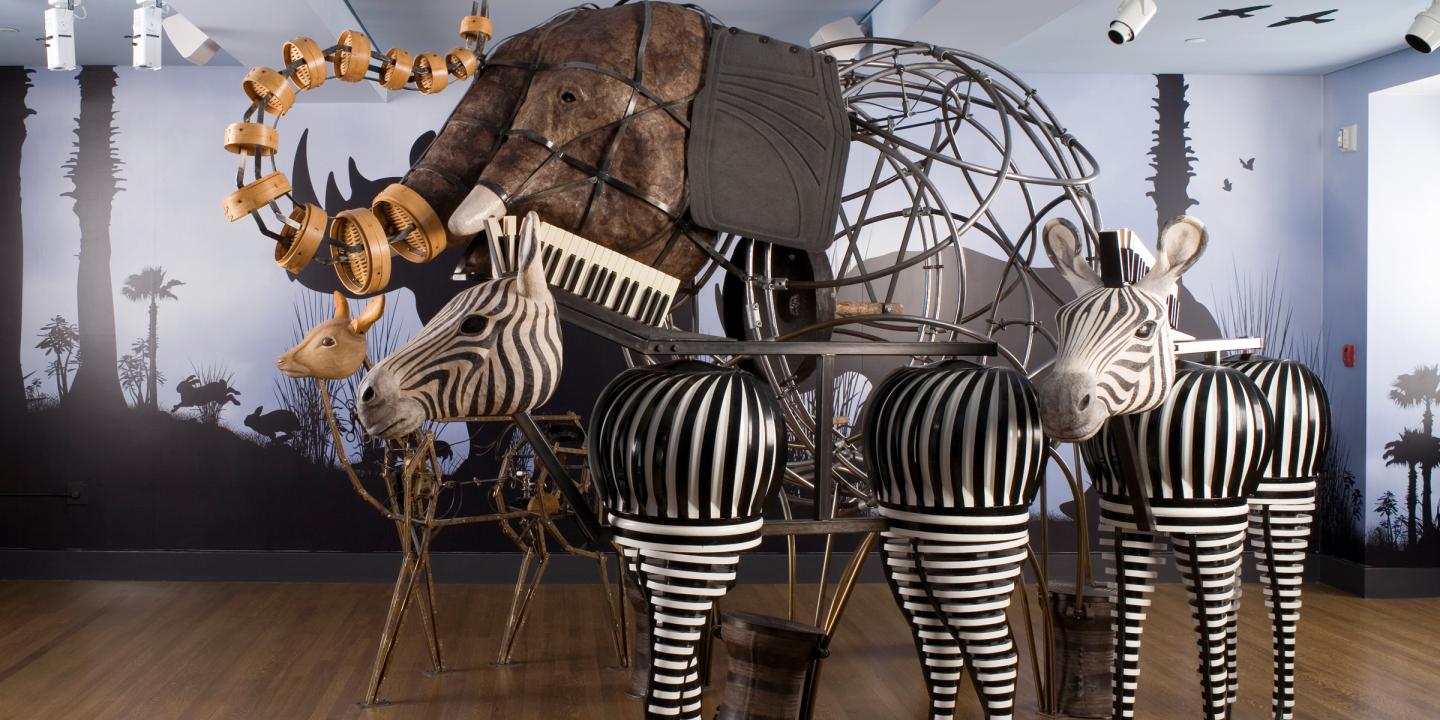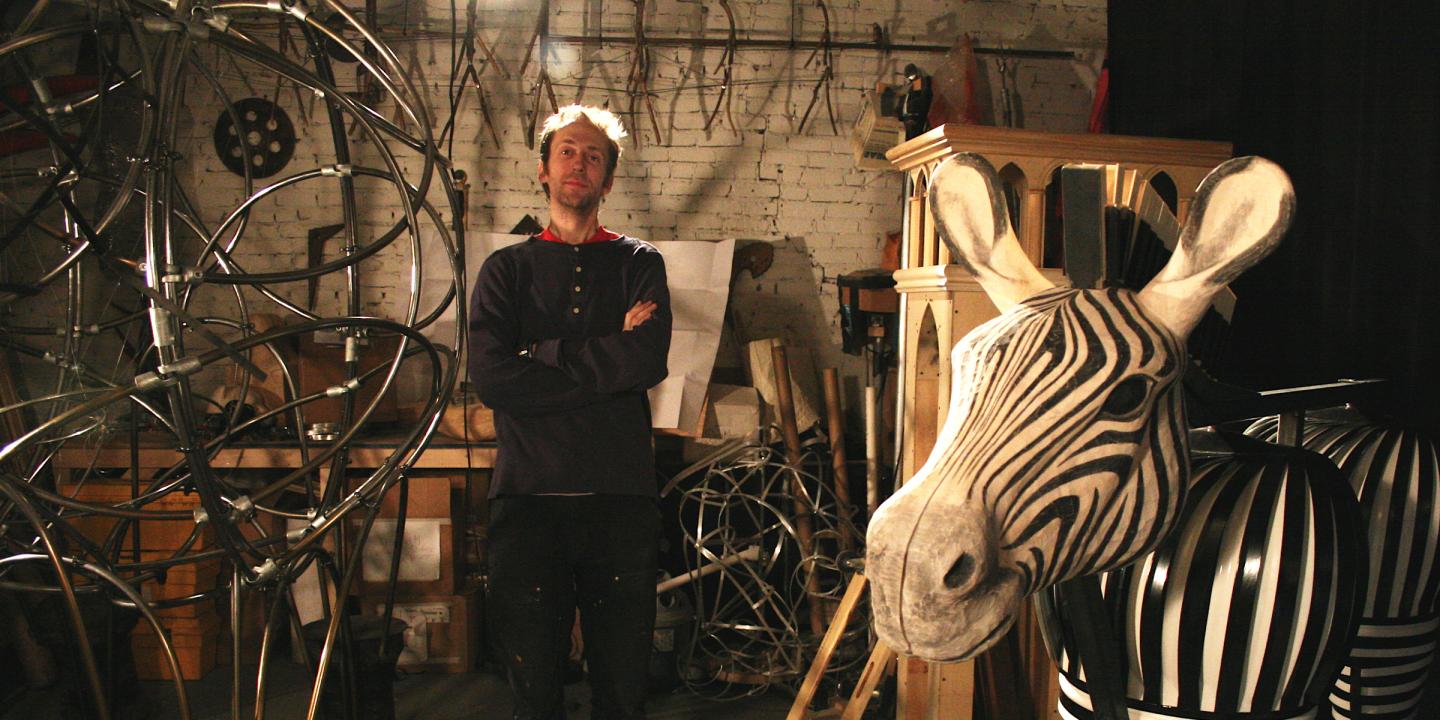
The Ark and its nearly four hundred animal inhabitants—from plush toys to the sophisticated, witty puppets and sculptures—are designed to appeal to both children and adults. The architecture firm Olson Kundig worked closely with Brooklyn-based artist Christopher M. Green and designers at Lexington, the custom fabrication house that generated the technical plans and helped to craft the exhibits and animals.

Green, who has a background in puppet theater, created the large kinetic animals that greet you when you firstenter. The elephant is made out of a gong, vegetable steamers, and Thai rain drums. The zebras are composed of wind turbines and keyboards. “The inspiration just really comes from stuff, just going out and walking through an antique store and being like, ‘Those are ears!’” says Green. “I bought the shoe stretchers and put them on the deer. And I picked up a boxing glove and knew its shape could form the body of a kiwi bird.”
Besides being durable, the kinetic sculptures and puppets also had to be transparent (so visitors could see theparts that make up the whole and how they operate), sustainable (using mainly recycled or repurposedmaterials), and safe for children.
For the animals on the Ark, the Skirball and the project design team participated in spirited brainstormingsessions, with Olson Kundig presenting sketches. Lexington fabricators laid out materials: catcher’s mitts for turtle shells, disco balls for elephant eyes, fans for owl wings. And together, the team created the hundreds of fanciful animals that now populate the Ark, including visitor favorites like the Norway rats made of croquet balls, the tarantula made of bendy straws, the giraffe made of terra cotta planters, and the iguana made from a handsaw.
“All of these animals are made from different bits and pieces from everywhere, just like each of us,” says Sheri Bernstein, Museum Director. This innovative construction teaches children not only about the limitlessness of creativity, but also about the benefits of recycling materials, a theme reinforced by many of the hands-on activities that take place inside the Noah’s Ark galleries.
Kallie, a student at Clover Avenue Elementary School, wrote to the Skirball after her visit: “I learned that a piece of trash can be turned into a masterpiece.” By allowing visitors to interact so freely with the animals on the Ark—many of them endangered—the on-site education team emphasizes the significance of caretaking.
As children spin the zebras’ bodies round and round, ring the gong at the center of the elephant’s body, take a ride on the camels’ humps, or lounge on the turtle made from repurposed basketballs, they are encouraged to celebrate the differences found among our planet’s diverse species, and to recognize the special role they each play in taking
care of the earth as well as of one another.
Jorge, a second grader at Alexander Science Center, put it best: “If we don’t take care of the earth, then we can’t live.”